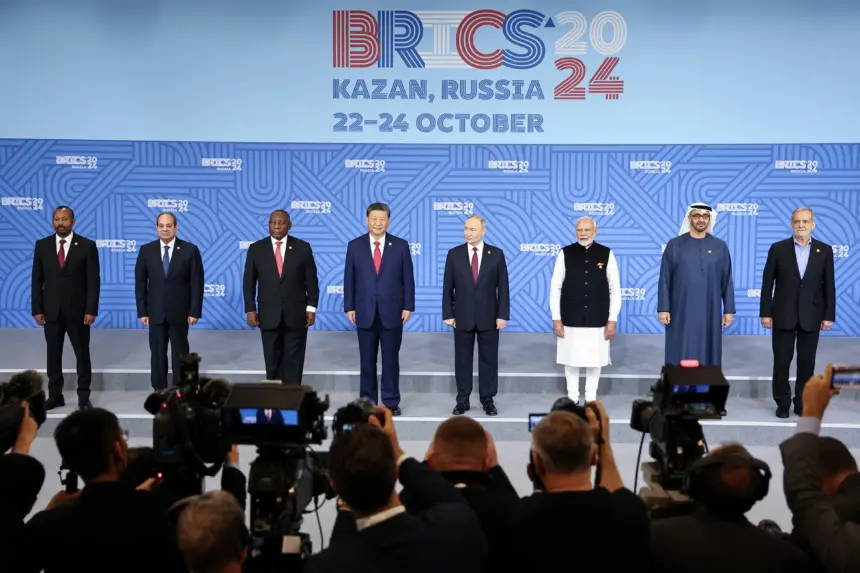It has been a full year since Egypt officially raised its flag within the expanded BRICS group, marking Cairo’s transition from a mere observer to an active partner in a bloc representing over half of the world’s population and nearly forty percent of global economic output. This accession was not a symbolic gesture; it marked the starting point of a renewed foreign and economic policy anchored in diversification, balance, and strategic autonomy—positioning Egypt as a leading actor capable of shaping its own destiny in a multipolar world.
Over the past year, the tangible benefits of membership have become increasingly apparent across multiple dimensions: economic, strategic, and research-driven. Scores of Egyptian research initiatives have secured joint funding with Russia, China, India, and Brazil in fields including artificial intelligence, clean energy, biotechnology, and advanced industries. These initiatives go beyond financial support, encompassing joint training programmes, knowledge exchange, and technology transfer—all designed to strengthen domestic capabilities and prepare younger generations for a rapidly evolving global labour market.
On the financial front, the Central Bank of Egypt has expanded currency swap agreements with Beijing, Moscow, and New Delhi, increasing the share of trade settled in Egyptian pounds, yuan, rubles, and rupees to over one-third of total transactions with BRICS nations. This has not only saved Egypt billions of dollars previously spent on the US dollar but also reduced reliance on volatile global currency markets, enhancing financial stability and the country’s resilience against international economic shocks.
In terms of major infrastructure projects, the New Development Bank has played a pivotal role by providing concessional loans for strategic initiatives—from the development and expansion of Alexandria Port’s logistical capacity to extending Cairo’s metro network to suburban areas. Simultaneously, work on the Dabaa nuclear power plant has accelerated, supported by Russian concessional financing and international expert collaborations. These projects are not merely physical achievements; they form the backbone of Egypt’s economic restructuring, boosting local manufacturing and enhancing infrastructure capable of supporting international trade.
Regionally, Egypt has leveraged its strategic location to emerge as Africa’s gateway to BRICS, exemplified by new agreements for exporting pharmaceuticals and agricultural products via trade corridors passing through India, Brazil, and South Africa, with a focus on high value-added goods. This demonstrates that membership extends beyond bolstering the national economy, positioning Egypt as a central link between Asia, Latin America, and Africa, and consolidating its role as a strategic hub in global commerce.
The Egyptian experience has showcased the country’s ability to achieve a delicate strategic balance. Rather than severing ties with the West, Cairo has transformed BRICS membership into a powerful bargaining chip with all parties. This equilibrium has enabled greater support from the International Monetary Fund and the European Union, alongside new opportunities toward the East and the Global South—evidence of a successful multipolar engagement strategy designed to safeguard Egypt’s interests without aligning exclusively with any single bloc.
Looking ahead, membership could catalyse a substantial developmental leap if several strategic initiatives are implemented: establishing joint industrial zones along the Suez Canal corridor to serve as hubs for manufacturing and exports; launching a BRICS–Egypt fund to support start-ups and domestic innovation; and developing a shared currency basket to lower financing costs and enhance financial autonomy. Moreover, integrating fintech solutions and digital transformation within major projects will increase economic efficiency and reduce reliance on conventional systems, enabling Egypt to compete regionally and globally with greater agility.
On the social front, investment in education and vocational training forms the cornerstone of Egypt’s new BRICS+ strategy. Beyond major infrastructure projects, the state aims to cultivate a new generation of engineers, technicians, and experts capable of engaging with global value chains. Comprehensive training programmes, university partnerships, and specialised technical institutes in clean energy and biotechnology are transforming knowledge into a genuine instrument of empowerment and autonomy.
Egypt’s accession to BRICS+ was not a transient political move but the commencement of a long-term trajectory linking economic strategy, foreign policy, and human capital development. With its rich history and strategic location, Egypt is no longer merely a new member of a global club; it is today a civilisational and economic bridge between continents, capable of being a genuine decision-maker rather than a passive recipient of directives. By continuing to implement this vision, Egypt can emerge as a pioneering model for countries striving for economic and strategic independence without sacrificing international relationships.
After just one year, Cairo has proven that joining BRICS+ was not a symbolic gesture but the authentic beginning of a new path toward a stronger, more independent, and sustainably prosperous republic.
Dr. Hatem Sadek – Professor at Helwan University

